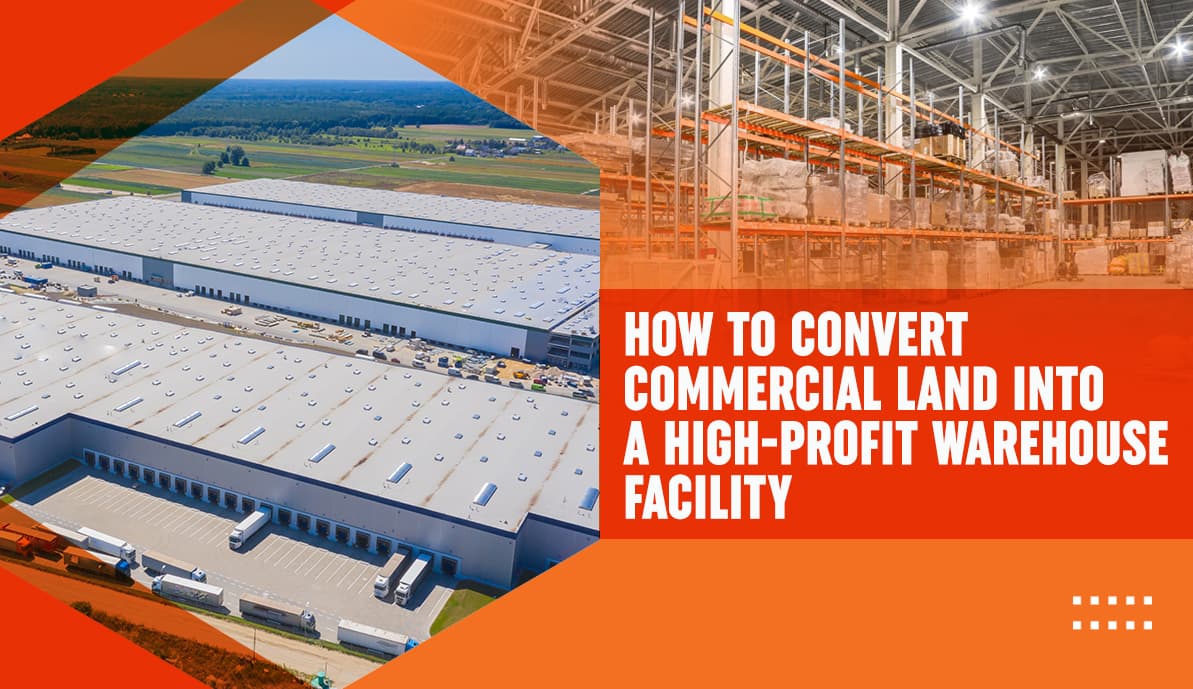Converting commercial land into a warehouse facility can be a game-changer. With the rise of e-commerce and logistics, warehouses are in high demand. The right planning and execution can turn an empty land parcel into a money-making machine. A well-built warehouse attracts businesses looking for storage and distribution hubs. The key lies in efficient planning, smart investments, and strategic marketing.
Planning the Warehouse Setup
A well-planned warehouse facility starts with a strong foundation. The first step is checking local regulations and getting the necessary permits. A legal expert can help navigate zoning laws and land-use policies. Once that is sorted, the real work begins. Analyzing the demand and understanding the supply chain requirements in the area can further enhance planning.
Choosing the Right Layout
A warehouse should be spacious, functional, and efficient. The layout should optimize storage and movement of goods. High ceilings allow vertical storage, maximizing space utilization. Wide aisles make forklift movement easier, improving efficiency. Allocating separate zones for loading, unloading, and packaging increases productivity. Proper ventilation and lighting improve working conditions for labourers.
Infrastructure and Connectivity
A warehouse needs proper infrastructure to function smoothly. Good roads and easy transport access ensure quick delivery of goods. Investing in drainage and power backup prevents operational disruptions. This boosts productivity and minimizes downtime. Water supply and sanitation facilities also contribute to smooth operations. Proximity to highways, railway stations, and ports further enhances logistics efficiency.
Legal and Financial Considerations
Before starting construction, it’s crucial to check all legal and financial aspects. Getting the right land-use approvals prevents future complications. Proper documentation ensures smooth ownership and compliance with local laws. Financial planning is equally important. Calculating costs for construction, maintenance, and operational expenses helps in setting a competitive rental price. Seeking financial assistance from banks or investors can ease the initial investment burden.
Construction and Material Selection
Using quality materials ensures durability and low maintenance costs. Steel structures are strong, cost-effective, and easy to install. Proper insulation reduces energy costs, making the warehouse more efficient. A solid foundation ensures longevity and safety. Using fire-resistant materials lowers risks and improves compliance with safety regulations. Eco-friendly construction methods help reduce carbon footprints and qualify for green building certifications.
Optimizing the Warehouse for Profit
Profitability depends on efficiency and strategic operations. A well-managed warehouse can generate high returns. Smart choices in technology and design improve efficiency and reduce costs. Proper inventory planning ensures maximum space utilization and smooth movement of goods. Reducing operational inefficiencies can significantly boost revenue.
Technology Integration
Automation speeds up operations and minimizes errors. Warehouse management systems (WMS) track inventory in real time. Conveyor belts and robotic pickers reduce manual effort. This leads to faster processing and fewer delays. RFID tags and barcode scanners help track shipments accurately. Cloud-based inventory management allows businesses to monitor stock levels from anywhere.
Safety and Compliance
Safety measures protect workers and inventory. Fire safety systems and emergency exits are essential. Compliance with labor laws avoids legal troubles. Investing in safety builds trust and improves reputation. Installing CCTV cameras and security personnel prevents theft and unauthorized access. Regular safety audits and employee training programs ensure adherence to regulations. Emergency response systems, such as sprinklers and alarms, provide additional protection.
Maximizing Storage Efficiency
A warehouse should make the best use of space to increase profits. Using vertical racks and mezzanine floors expands storage capacity without requiring more land. Dynamic slotting systems arrange inventory based on demand patterns. Cross-docking helps in faster movement of goods, reducing storage time. Implementing an organized inventory system minimizes errors and speeds up retrieval. These methods enhance efficiency and make the warehouse more attractive to clients.
Marketing and Leasing Strategies
Finding the right tenants ensures a steady income. Online listings and real estate brokers help reach potential clients. Competitive pricing and flexible lease terms attract businesses. Offering value-added services increases demand and revenue. Advertising through logistics trade fairs and industry events also helps in finding potential clients. Partnering with third-party logistics providers (3PLs) expands business opportunities. Providing custom storage solutions for different industries enhances marketability.
The Bottom Line
Converting commercial land in Kolkata into a warehouse is a profitable venture, but only if planned properly. The demand for storage facilities is growing, especially with the expansion of e-commerce and supply chain networks. A warehouse in Kolkata can generate high returns if it is designed efficiently with modern technology, strategic marketing, and effective management. Infrastructure, compliance, and safety measures play a vital role in long-term success. In a fast-paced business world, a well-structured warehouse is not just a storage space. It is a high-value asset that can drive significant revenue.









